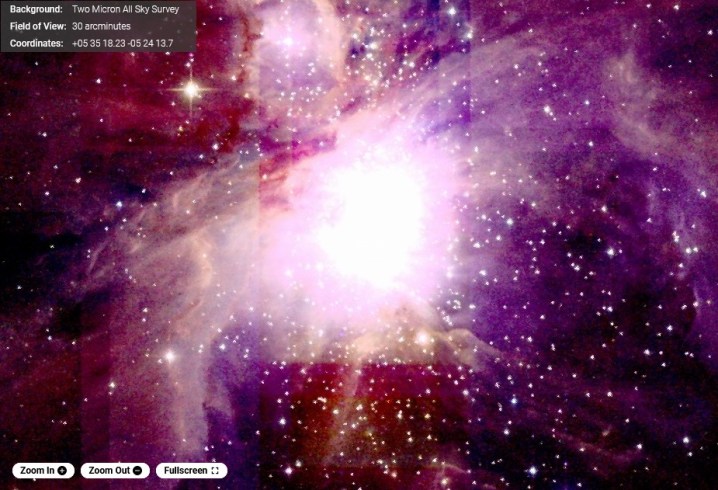If you’re looking for a relaxing way to peruse the fascinating sights of space on your lunch break, then a newly updated tool from NASA has you covered. The Space Telescope Live tools show the current targets of the James Webb Space Telescope and the Hubble Space Telescope, letting you browse the cosmos from the perspective of two of the hardest-working telescopes out there.
You can visit the web-based tools at WebbTelescope for the James Webb Space Telescope and HubbleSite for the Hubble Space Telescope. Clicking on a link will bring you to a portal showing the current and past observations of the telescope and a ton of detail about the observations.
At time of writing, for example, the tracker shows James Webb observing a region called HST10 using its NIRSpec and MIRI instruments. This particular observation is part of a project using MIRI’s integral field unit (IFU), a spectroscopy mode that can observe either single stars or larger targets like nebulae. The study is looking at gas, dust, and molecules called polycyclic aromatic hydrocarbons (PAHs) in protoplanetary disks, which are the disks of matter from which planets form.

The images you see on the tracker aren’t the live images being pulled straight from the telescope, as that data still needs to be processed. Instead, they use existing data from projects like the Two Micron All Sky Survey and the Digitized Sky Survey 2 that show images of the region that the telescope is currently pointed at.
When you see the current target through the tracker, you can use the Observation Details button at the top right to pull up information about the instruments being used, the science topics being researched, and the particular project and principal investigator of the research.
You can also see a schedule of when observations started and ended, and their total duration — they are often shorter than you might imagine. The above observation, for example, lasted less than 90 minutes. Typically, projects have multiple observation blocks over a period of months, but with many different researchers wanting precious time on the telescope, the project planners have to be very efficient with the time they are allotted.
You can also click through older observations using the Previous Target and Next Target buttons. In addition to showing you the variety of objects that the telescopes observe, from nebulae to stars to galaxies, this also gives you a sense of how the telescope tracks its targets across the sky — and it also shows how many different observations get squeezed into a day.
Editors’ Recommendations
Services Marketplace – Listings, Bookings & Reviews